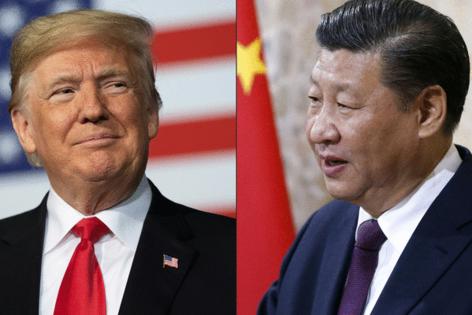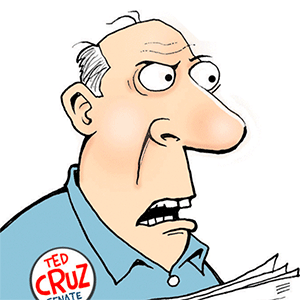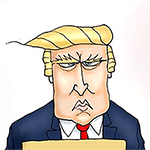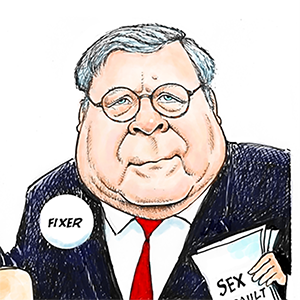Trump's deal-making diplomacy grows fragile as China fires back
Published in News & Features
President Donald Trump’s preference to cut one-to-one deals with allies and adversaries has been the hallmark of his self-proclaimed deal-making magic, but with the China trade truce seemingly teetering on collapse, the fragility of such an approach has been laid bare.
China’s Ministry of Commerce late Wednesday night New York time unveiled broad new export controls of rare earths and other critical materials that are key to U.S. defense and technologies applications. The news sparked shock across those specific groups, but wasn’t met with similar reaction across broader markets.
That is until Trump’s nearly 500-word Truth Social post published around 11 a.m. in New York on Friday threatened a “massive increase” of tariffs on goods from China. The move sent major U.S. indexes into a daylong free-fall. Hours later, Trump said he’d hit China with an additional 100% tariff from Nov. 1 — threatening to push rates near what both sides warned earlier this year would represent an effective decoupling. He also announced plans for export controls on critical software.
The sudden, and unexpected, back-and-forth between the world’s two largest economies came just weeks ahead of a consequential meeting between Trump and Chinese President Xi Jinping in South Korea, where the two sides anticipated hammering out the details of a broad-based trade deal. The central leverage of the negotiation is export controls — specifically, the U.S.’s existing export controls of semiconductors and AI chips needed by China and China’s export controls of its critical minerals and magnets needed by the U.S.
“The Chinese saw the reaction and leverage they had with export controls earlier this year, so it’s not surprising they would head into these talks to try to stack the deck in their favor,” said Jon Hillman, a senior fellow for geoeconomics at the Council on Foreign Relations. “Any agreement will always be at risk if China decides to use that leverage again.”
And they did.
Trump in May negotiated a 90-day truce with China, delaying any implementation of new tariffs or export controls threatened during his April “Liberation Day” announcement. The move quieted global markets rocked by a rapid escalation of tariffs and retaliatory tariffs that briefly saw U.S. levies on Chinese goods reach as high as 145%.
China similarly agreed to lift the export ban of its critical minerals and magnets. However as the months passed, Trump allies in farm states began to grumble that China had essentially stopped importing U.S. soybeans — a move the president described as a negotiating tactic. The White House has said it’s planning an aid package for farmers, though hasn’t yet announced specifics.
Even still, it was a relatively calm truce period. But all that ended this week, when China announced the escalation of export controls. Now, as six months ago, both economies stand once again on the brink of a trade war.
It’s the uncomfortable reality of Trump’s many bilateral trade negotiations. While U.S. and global markets react positively to grand pronouncements that the president has agreed to deals or delays — with China, with Russia’s Vladimir Putin, with India, and others — there’s often an equal shock when Trump or his trading partner walk back promises that thrust the deals into fresh uncertainty.
“The U.S. is now dealing with a more assertive, well-prepared, less U.S. dependent and self-confident Beijing than during Trump 1.0,” when a so-called “phase one” deal was signed laying out several concessions by Beijing, Wendy Cutler, senior vice president at the Asia Society Policy Institute, wrote in a LinkedIn post on Saturday. “The past 24 hours leave no doubt that those days are over.”
U.S. stocks on Friday suffered their worst selloff in six months. Wall Street’s chief fear gauge topped a level not seen since April. Nvidia Corp., the world’s largest public company and a central actor caught in the middle of the two nations’ export controls negotiations, slid nearly 5%. All of this after a single social media post by the president.
“We’ve actually been very risk averse on the equities side on this view that there’s a lot of uncertainty and risk out there,” said Dan White, the head of research at Blue Creek Capital. “Sentiment in the markets to us was showing a rosy scenario, but the reality is there was a lot of risk and uncertainty out there, so today was a wake-up call for a lot of people.”
The U.S. can more easily navigate bilateral negotiations with smaller countries that are in a weaker position, but when it comes to bigger nations like China, collective responses are more effective, according to Cutler, who spent decades negotiating deals for the government in the office of the U.S. Trade Representative.
The president floated the idea that because of the escalation he may not meet Xi in South Korea, but there’s belief among experts that the Chinese announcement and Trump’s response are part of the negotiation ahead of the actual meeting. The worry among many, though, including hawks and former Trump administration officials, is that China has a stronger hand than ever.
“Among the Chinese media in China, there is a recognition that China holds the levers and is using the levers to substantially weaken our manufacturing sector including semiconductors, AI and defense articles,” said Nazak Nikakhtar, a former Commerce Department official during Trump’s first term and a current partner at Wiley Rein who represents clients in those industries.
“But if you pursue handshake deals, it’s classic game theory: The other side is going to evaluate your response if they renege. And if they think you’re chicken, they’re just not going to adhere to the deal.”
———
(With assistance from Brendan Murray, Natalia Drozdiak and Eric Martin.)
©2025 Bloomberg L.P. Visit bloomberg.com. Distributed by Tribune Content Agency, LLC.







Comments